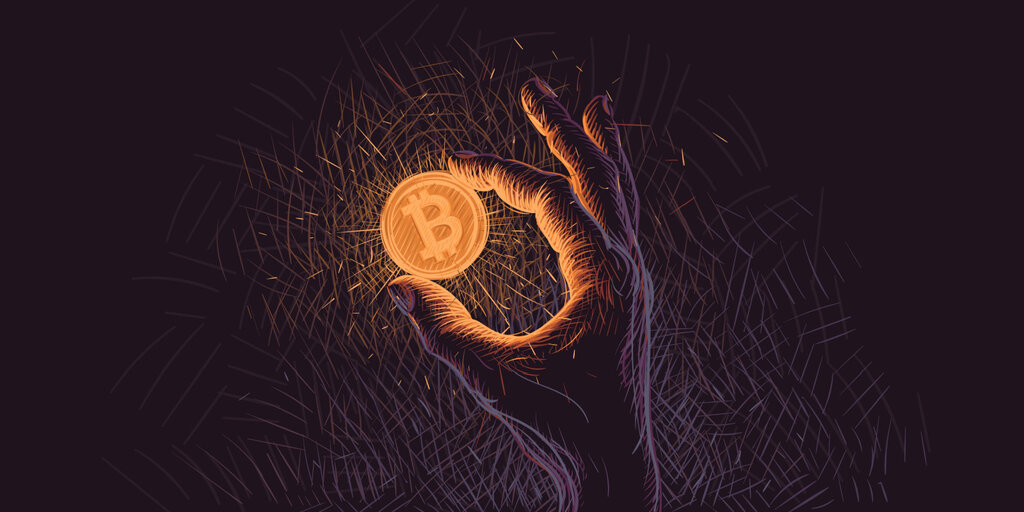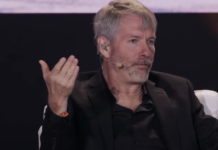A major proposal to increase Bitcoin’s functionality is making the rounds on Twitter—and as is now par for the course, it’s stirring controversy among developers.
“Drivechains”—proposed by Paul Sztorc as BIP 300 and BIP 301—would create a native sidechain mechanism for Bitcoin, allowing BTC to be “trustlessly” bridged to separate chains.
The sidechains are secured through blind merge mining, which allows Bitcoin’s existing miners to effectively secure other blockchains without needing to run the sidechain’s software. These networks could be built with whatever alternative functionality that developers want while inheriting both Bitcoin’s security and native currency.
“Sidechains are a kind of ‘holy grail’ upgrade to Bitcoin,” Sztorc told Decrypt via DM. “We get every single feature we could want, and—even better—the features are all opt-in.”
That includes privacy, smart contracts, and additional tokens. Certain critics, however, don’t think that’s a good thing.
“The more I read about BIP300, the more it seems like a great way to introduce enormous amounts of grift, complexity, risk and shitcoinesque functionality into the Bitcoin codebase,” tweeted the popular Bitcoiner hodlonaut on Sunday.
Like many within the community, hodlonaut supports being “extremely wary of change,” and of the motives of anyone “politicking to change Bitcoin.”
Many others oppose drivechains as being a thinly-veiled excuse to introduce so-called “shitcoins” to Bitcoin because they’re not entirely convinced it will deliver much utility. That includes avid Bitcoiner and “Bitcoin Standerd” author Saifedean Ammous, who now advises El Salvador President Nayib Bukele.
Yet according to Storzc, the opposite is true: BIP300 stands out from protocols like Taro, Ordinals, and Coloured Coins in that it does not require a new asset. Instead, they can be used for strictly BTC purposes, like more private and scalable transactions.
In a sense, it also keeps with the spirit of Bitcoin conservatism: Through one upgrade, drivechains could allow future development to take place on top of Bitcoin, no longer requiring changes to the base layer.
“It is the same as the lightning network. If you don’t run a drivechain node, then you won’t even see it,” said Sztorc.
It’s not a perfect solution, however. Certain developers are critical of drivechains for technical reasons—especially related to their peg-out mechanism.
As Storzc explained, users must “trust 51% of the [Bitcoin] hashrate not to broadcast an erroneous hash for 6 months straight,” in order to unlock drivechain features. “If that happens, the L2 coins are lost.”
According to Bitcoin Core developer Luke Dashjr, this would make a hypothetical 51% attack against Bitcoin far more dire. Not only could miners conspire to reverse the blockchain, but they would actively have the power to steal users’ coins.
“With the current state of mining centralisation, IMO it would be pretty dumb to send any bitcoins to a drivechain,” wrote Dashjr last week. “There are better ways to burn bitcoins or donate to miners.”
That said, the developer said he remains “neutral” on drivechains as a concept, and that they should be available to those who want them if there’s enough community support. Earlier this month, he submitted a rough draft proposal to Github on how to potentially implement sidechains.
While acknowledging the risk, Sztroc considers this vector of attack “easier said than done,” given that any nefarious miner behavior would be “highly auditable,” and would need to be maintained “block after block for 6 consecutive months.”
Storzc said miners should be incentivized to keep drivechains alive since they harvest them for fees. Theoretically, if this idea proves incorrect, then Bitcoin itself may also be doomed.
“Satoshi’s design assumes that—in the long run—fees alone will be juicy enough to compel forward motion of a valuable blockchain,” he said. “So either the fees are an effective deterrent, or they’re not.”
Atomic Finance CEO Tony Cai is also interested in how drivechains can foster Bitcoin-based innovation–but has several security and economic concerns. For example, Miner Extractable Value (MEV) could quickly complicate Bitcoin’s economics and incentives if miners feel prioritized to process drivechain transactions over on-chain ones.
“If a drivechain were compromised, it might tarnish the overall trust in the Bitcoin ecosystem,” he added in a message to Decrypt. “We should probably tread carefully.”
Sztorc, on the other hand, doesn’t worry too much about drivechains somehow corrupting “miner incentives.” As he pointed out, Bitcoin has already withstood numerous changes affecting its miner economy, including natural gas flaring, electricity repurchase agreements, Namecoin merge mining, and more.
“The mining incentives are the same they’ve always been: follow the full node rules, hash as much as possible, maximize revenues, and minimize costs,” he said.
Ultimately, Sztorc believes bringing new features to Bitcoin through drivechains may be the key to ensuring its victory over all other currencies. If not, the risk of an altcoin with better features and monetary properties eventually overtaking Bitcoin still looms large.
“With Bip300 sidechains, even that remote possibility is eliminated,” he said. “So Bitcoin’s victory (over Alts and Fiat) is nearly certain at that point.”
Stay on top of crypto news, get daily updates in your inbox.









